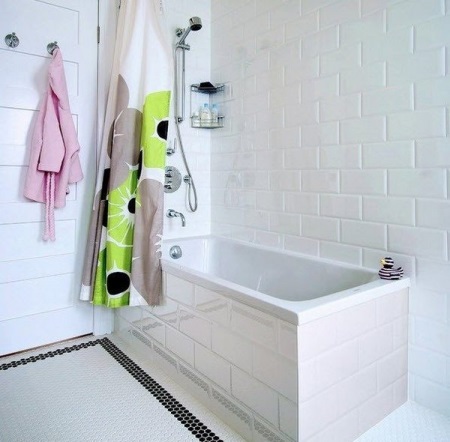Ceramic Tile Bathroom
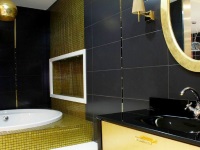
The choice of finishing material for repairs is always quite responsible and important moment. Especially when it comes to the bathroom. After all, the tiles should not only be beautiful, durable and long-lasting. The hygiene and environmental friendliness of the tiles is also important.
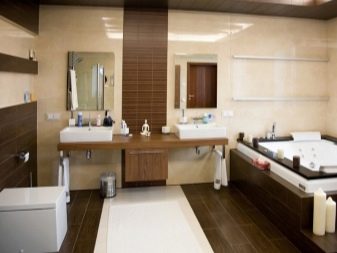
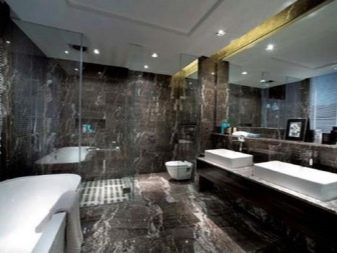
All the most serious requirements are fully met by ceramic tiles. But how to choose the right color, size, quantity and what subtleties may arise during the repair? About all this our article will tell you.
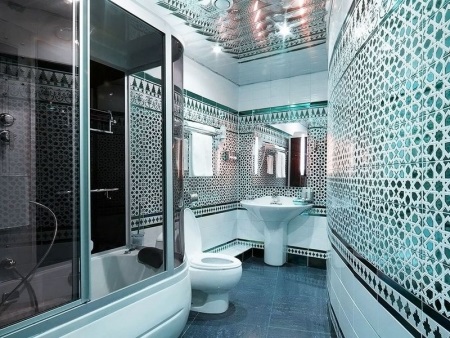
What is it?
Ceramic tile so long ago and firmly entered our lives that today few people think about its composition and method of production. Ceramic tiles are plates (most often rectangular), made of fired clay.
Despite the fact that today on the market of construction materials is a huge selection, ceramic tiles continue to be one of the most commonly used options for decoration of the bathroom.

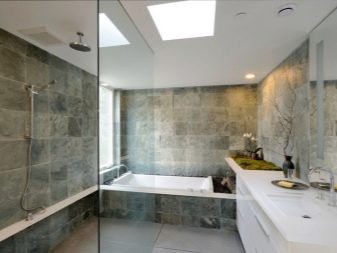
Ceramic owes its popularity to a number of undeniable advantages:
- Moisture resistance. Ceramic tile perfectly resists constant exposure to water and humid air.
- Durability. Properly laid tiles retain their decorative and performance properties for many years. The coating fades, does not fade, does not crumble, does not crack, does not lose its properties with frequent use of detergents and cleaners.
- Practicality. Ceramics are easy and convenient to care for. More precisely, the ceramic coating does not require any special care. Normal detergents + moist sponge.
- A wide choice. Today, construction stores offer a huge number of the most diverse collections for wall and ceiling cladding for every taste and wallet.
- Versatility. Ceramics is ideal for decorating the bathroom in any style chosen for it.

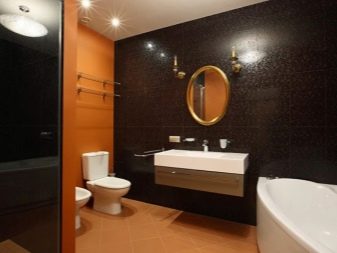
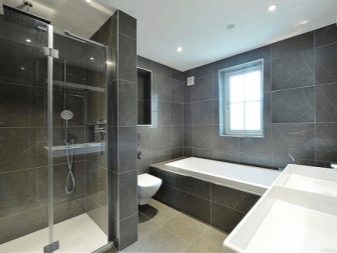
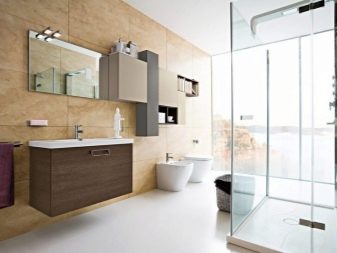
Like any other finishing material, ceramics has its disadvantages:
- The difficulty of installation. Conditional disadvantage, it all depends on the choice of laying method and the availability of skills. If the laying technique is followed precisely, ceramic tiling is quite feasible even for the novice builder. If a complicated laying technique and original design are chosen for the bathroom design, it is better to use the services of professionals.
- A large number of connecting seams. The smaller the size of the tiles, the more the joints will turn out, which will need to make a special grout. Over time, its color can change, darken, there is a possibility of mold or fungus. But this problem is quite solvable with careful care for the tiles and the treatment of joints with antiseptic agents.
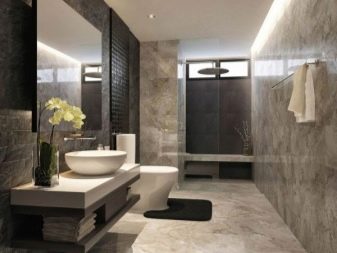
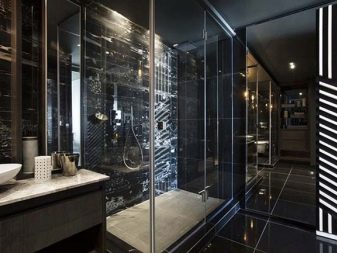
Types
Mosaic - a kind of ceramic tile, only much smaller in size. This material is ideal not only for creating interesting panels or decorative trim. Mosaics allows you to tile even the most inaccessible places and curved surfaces.
Mosaic can be used as an independent facing material, and in combination with conventional ceramic tiles, wall panels and other finishes.
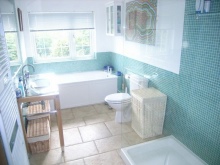
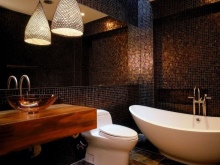
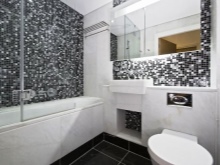
Mosaic coating is the best way to decorate the bathroom. Especially if several different shades of one or two colors (blue, blue, green, turquoise, etc.) are selected for cladding.

Porcelain tiles - a material that not only embodies all the advantages of ceramic tiles, but also has very high strength, durability, resistance to permanent mechanical stress. It is the ideal solution for tiling the floor, and in some cases the walls. To prevent slipping on a wet floor, porcelain tiles with a rough, grooved surface are used.
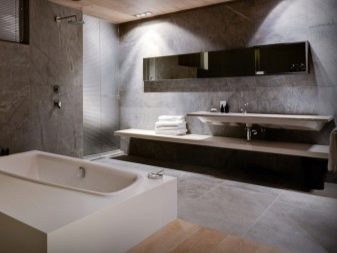
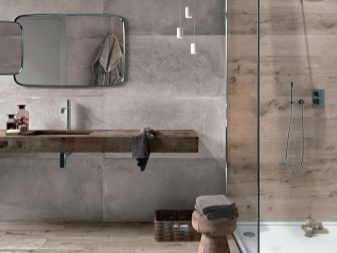
Ceramic tiles can be glossy or matte. Mirrored, glossy coating is more popular. Such tiles create a very attractive surface that does not require special maintenance. However, it is worth taking into account one point: glossy tiles of light colors almost does not give glare, while dark tiles strongly glare, and this can be irritating. This point must be taken into account at the stage of bathroom design.

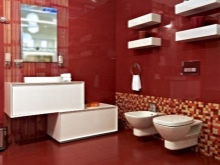
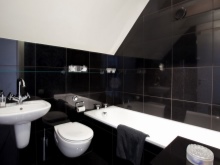
Matte ceramic tiles look more neutral and restrained. The only drawback: drops, stains, drips on such a tile will be much more noticeable than on a glossy coating. Matte tiles often have a rough, uneven surface, so they are ideal for floor tiling. Some collections of such tiles are specially stylized for natural and artificial materials: sand, pebbles, leather, metal, etc. But if this type of ceramic is very sympathetic to you, you can also tile the walls.
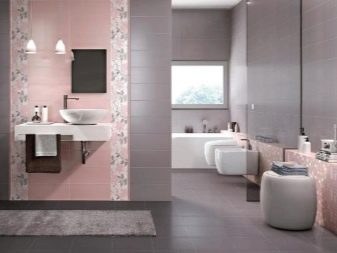
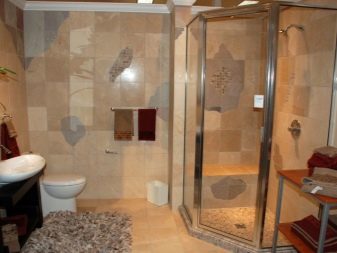
Tile decor
In addition to the fact that ceramic tiles can have an interesting, beautiful pattern, they can also be further decorated. For example, with rhinestones. An unusual way of decorating for the bathroom is ideal for interiors, decorated in the style of art nouveau, baroque and any other, where a rich and varied decor is used.
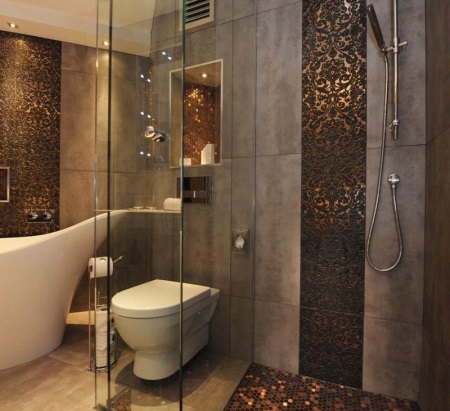
Rhinestones can decorate the tile itself, or a decorative border. Looks interesting dark tiles, decorated with rhinestones like a starry sky.
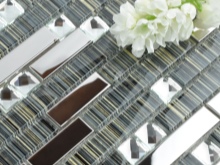
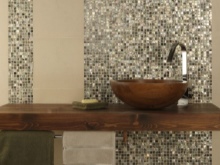
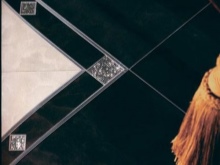
A more common option for decoration is textured, voluminous tiles with an interesting relief. This coverage looks very unusual and stylish. Tiles can have a relief in the form of a plant pattern, waves, geometric bands of different thickness and direction, rhombuses, squares. This can be embossed ornaments or convex drops, scales, honeycombs, etc.
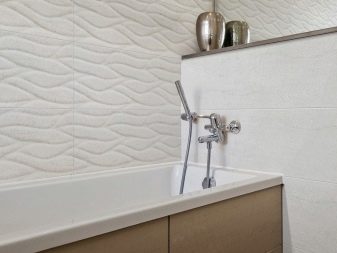

Recently, tiles stylized as natural and artificial materials have become especially popular. For example, like wood. Light brown tiles, reminiscent of natural wood veneer, create a full feeling of a sauna or a real Russian bath.
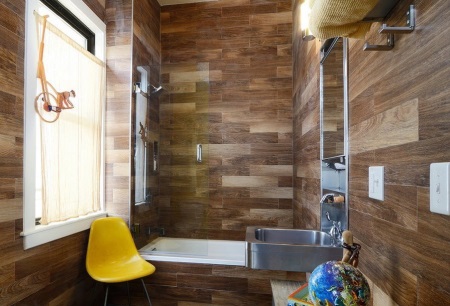
No less popular are the tiles, imitating the covering of crocodile skin, snakes and other reptiles. Such a coating looks incredibly expensive and spectacular.
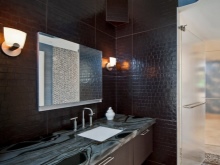
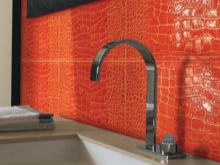
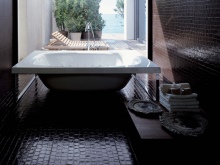
Popular sizes
The size range of ceramic tiles is huge, you can choose a suitable option for every taste.
The fundamental factor in choosing a tile size is usually the size of the room itself. If the bathroom is large enough, then the tiles can be almost any size and shape.
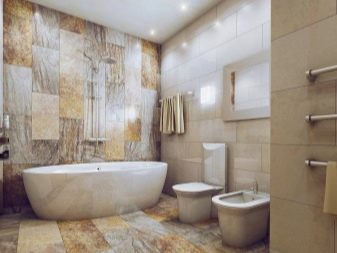
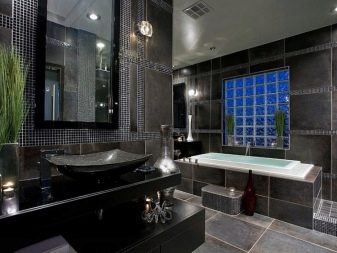
Certain difficulties arise when choosing a finishing material for a miniature room. Too large tiles will visually reduce the already small space. Using too small a tile, such as a mosaic, can also have the same effect.
The best option for a small-sized room - ceramic tiles of medium size, for example, 20*30, 30*30, 20*20, 20*40 cm.
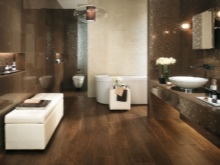
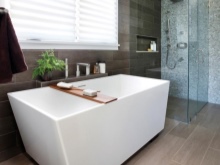
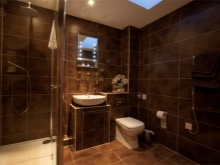
Rectangular tiles, laid with the long side horizontally, will help to visually enlarge the room. Rectangular tiles laid vertically, will help to "extend" visually low ceilings.
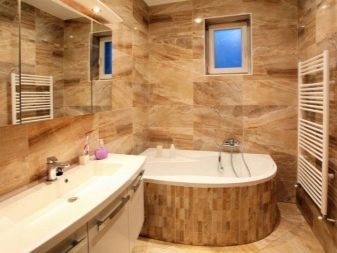
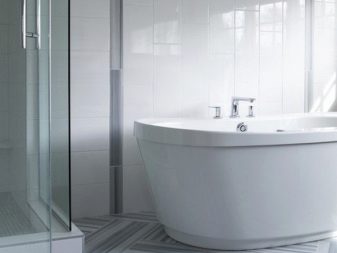
Laying options
To make the bathroom interior interesting and unusual will help not only the originally selected material, but also the way it is laid.
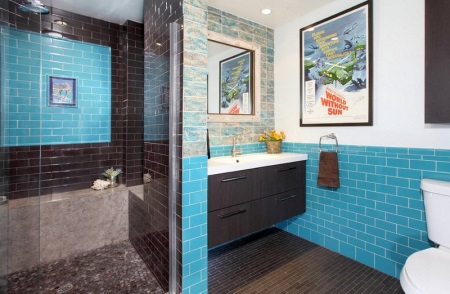
To date, there are several basic options for laying, on the basis of which you can show your imagination and experiment boldly with the design of the walls or floor.
1. Horizontal method (classic, basic). The easiest and fastest method. It consists of laying the material in even rows horizontally, tile by tile. Often this method is used to cover the walls or floor with tiles of contrasting colors. You get a "chessboard" pattern.
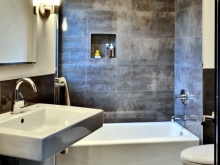
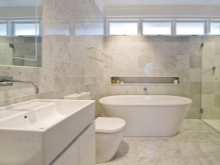
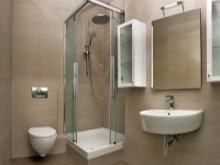
2. Diagonal method. The tiles are laid in the same flat rows, but diagonally.
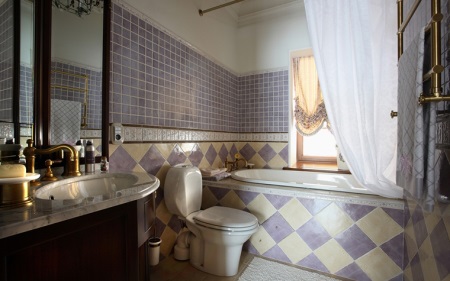
3. Laying with a shift. For this method of tiling rectangular tiles are used. When laying, each subsequent tile is shifted with respect to the previous one. It turns out the effect of a brick wall.
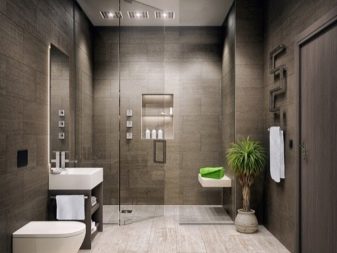
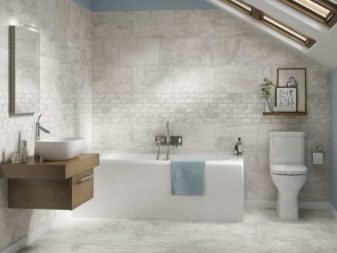
4. Parquet Laying. A variation of laying with a shift, only in this case the tiles are laid diagonally.

5. Modular method. For this variant of laying, tiles of different sizes and shapes are used, such as large and small squares or rectangles and squares.
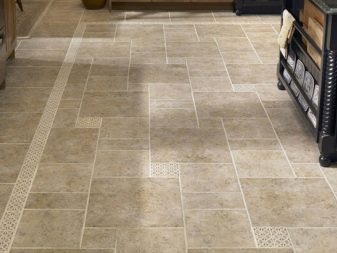
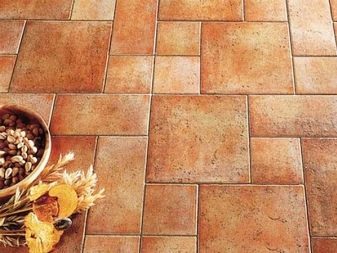
6. Ornament. Tiles are laid in a certain pattern on the wall or floor. Tiles can be monochrome or decorated with a pattern.
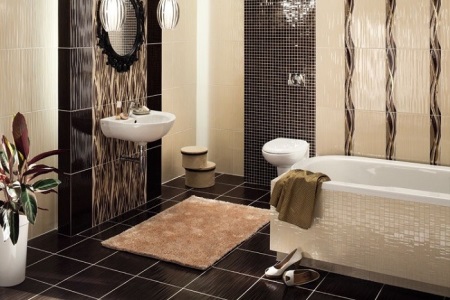
7. "Patchwork". One of the most original options, when tiles decorated with different patterns are used for tiling. Externally, such a surface resembles a motley patchwork quilt.


Popular colors
As you know, the wider and richer the choice, the harder it is to make it. Today ceramic tiles are presented in such a huge range that it is not so easy to choose the right color solution for the interior, as it may seem at first glance. When choosing a color, you should rely not only on your own desires, taste, fashion trends, but also on the size of the bathroom.
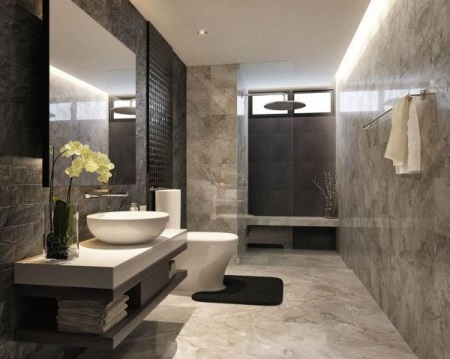
The light pastel range creates a sense of purity and freshness in any interior. Cool blue, lilac and green colors help to visually increase the space even of a small room. Are relevant this season and warm shades of gold and beige, coral, milk color.
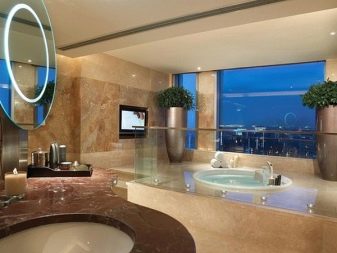
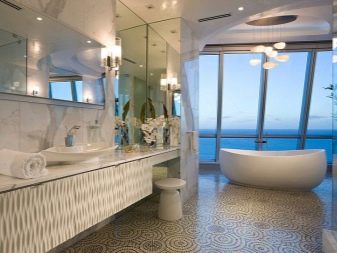
White is a win-win variant for any interior. It perfectly combines with other colors and shades, maximizes the room and makes it lighter. In order for the interior to not seem in a hospital-like sterile, it will be enough to arrange a few bright accents or use for decoration a contrasting material in color.
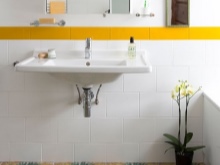
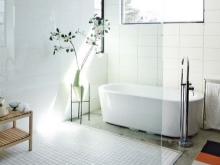
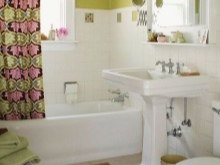
A popular range of bright colors include lettuce, neon green, sunny yellow, orange, red, turquoise, and purple. To ensure that the saturated color does not irritate and cut the eye, the room is usually done in a combination of a bright shade and white or another, softer color.
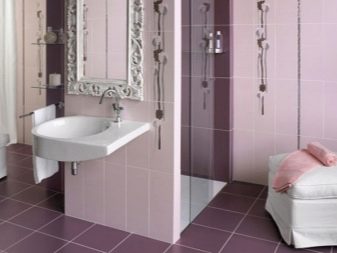

When choosing a tile with a pattern, too, do not forget that too large or bright print visually "eats up" the space. This does not mean that it must be abandoned altogether. The right thing would be to use such a tile to create bright accents in the interior.
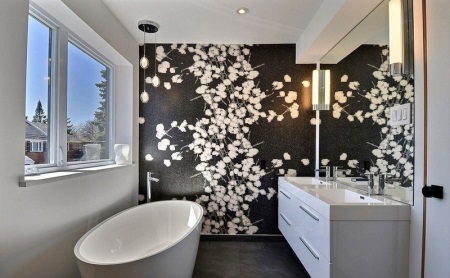
Among the most popular motifs for decorating the bathroom, of course, remains the marine theme: seashells, sand, seaweed, sea stars, inhabitants of the underwater world, etc. No less relevant are plant and geometric ornaments. Sometimes on the wall of the bathroom you can find cartoon characters, and original still lifes, and real landscapes.

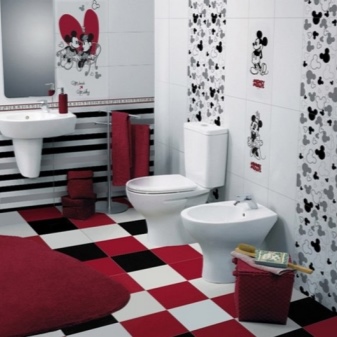
Color combination
In fact, the interior, decorated in a monochrome style, is quite rare. Usually you can find at least 2 - 3 different shades. Shades can be close in color, such interiors look very noble and restrained. It can also be bright, contrasting shades. Such an interior is suitable for bold, eccentric people.
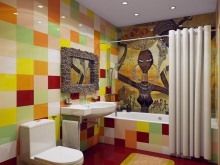

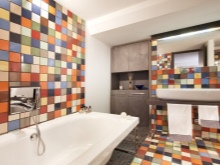
Most often the base color for the bathroom is white. It is not only very refreshing for the interior, but also softens the harsh colors used to decorate it. The most popular colors include: white + several shades of lilac, blue, green, white + red, black, dark brown.
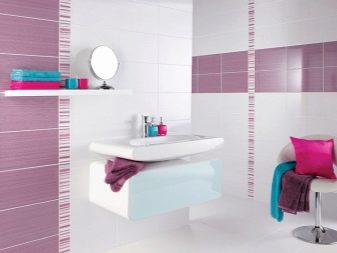
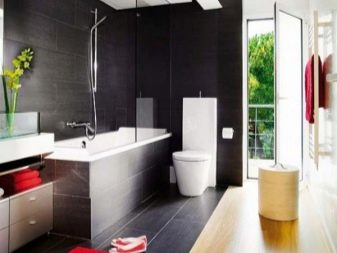
Styles
Among the variety of stylistic trends there are several most commonly used in interiors:
Classic
A win-win option that never loses its relevance. Most often, the classic style involves clear geometric lines in the lining, restrained colors, classic color combinations. For example, the lower half of the room is done in a darker color, the upper half in a lighter scale. Between them - a decorative border. The tiles can be monochrome or with a pattern.

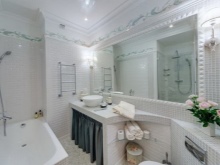
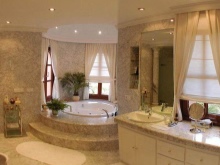
Oriental style
This style is characterized by rich colors, the use of a large number of decorative elements, tiles with a characteristic pattern or ornament.
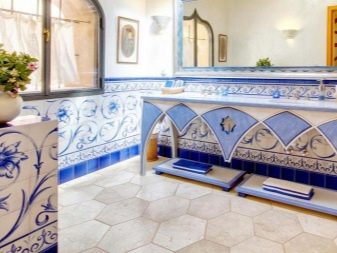
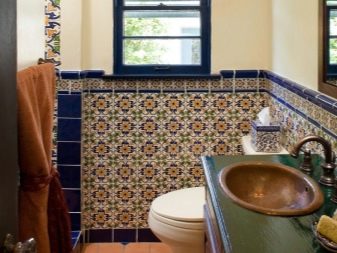
Provence style
This style is characterized by the use of tiles in soft, light colors: blue, lavender, beige, cream, etc. No sharp borders and outlines, only soft, blurred shapes. Simple, but at the same time, very beautiful interior with the use of different decor.
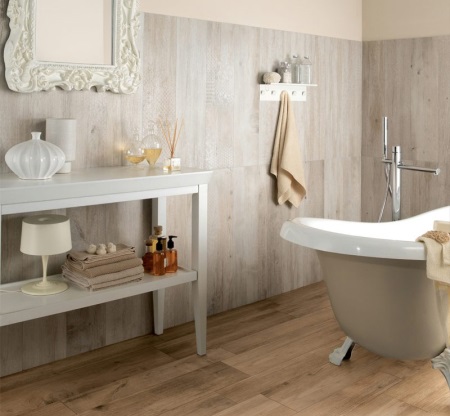
Minimalism
It is characterized by a laconic, simple design and a classic line of colors: black, white, gray. Nothing superfluous, a minimum of decor or its complete absence.
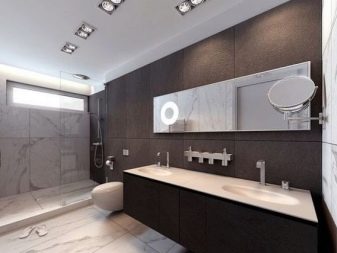
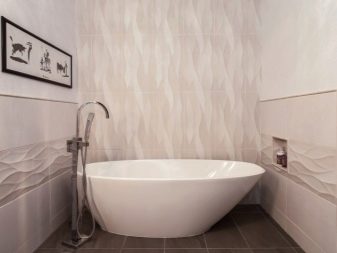
Modern
This style is characterized by soft, rounded shapes, warm colors, the use of beautiful decorations and accessories.
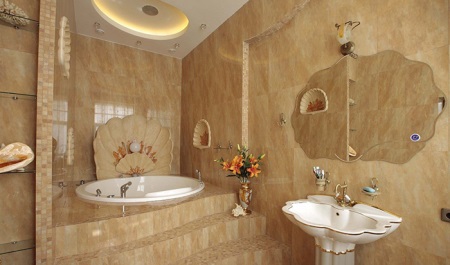
On what surfaces can I put tiles?
The base on which it is planned to put ceramic tiles, must meet certain requirements: it must be clean, dry, strong enough to withstand the weight of ceramics and have good adhesion to it. All four basic requirements do not suit all surfaces, so some of them need additional preparation, cleaning, leveling, priming, etc.
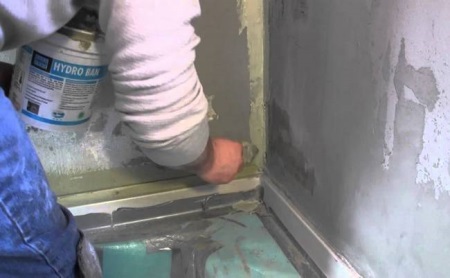
Ceramic tiles can be laid on both old and newly built substrates. It can be a wall painted with oil or water-based paint, concrete, expanded clay aggregate concrete, brick, gypsum substrate.
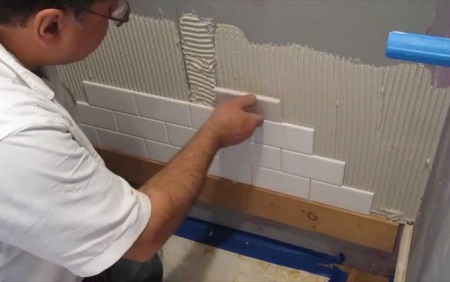
It is advisable to choose water-resistant gypsum board under the tiles, so that the cardboard layer will not peel off over time, along with the tiles. Before tiling, any surface must be primed. This will help reduce the flow of glue, and adhesion will strengthen.
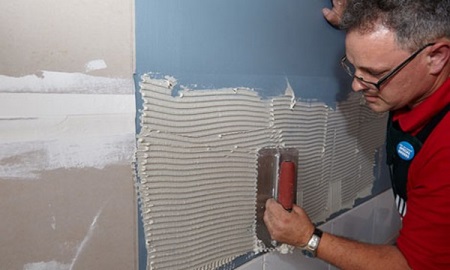
Experts do not recommend laying a new layer of tile on the old tile. Even if the old layer perfectly holds. The load on the wall with each new layer increases significantly, and there is no guarantee that at one moment both tile layers will begin to break down.
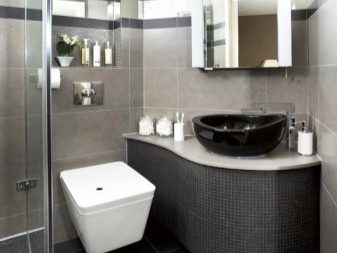
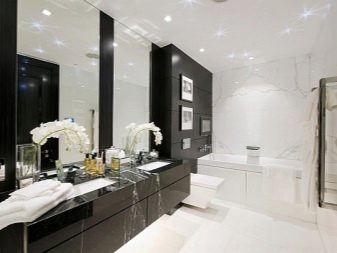
Trends
One of the current trends of this season is a game of contrasts. Fashionable interior consists of two or three contrasting shades. This can be a classic version: black + white, black + red, white + blue, white + dark brown. Or maybe a more unexpected solution: white + coral, pink, orange.
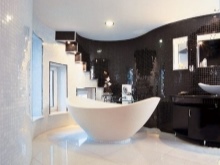
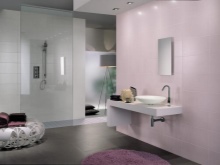
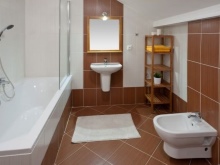
Increasingly popular are coatings stylized under different materials: wood, brick, stone, leather, metal, wallpaper, fabric, etc. For maximum effect in the corresponding style should be sustained and the furniture, accessories and decor in the bathroom.
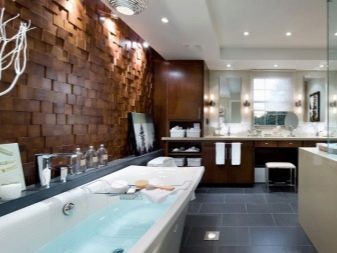
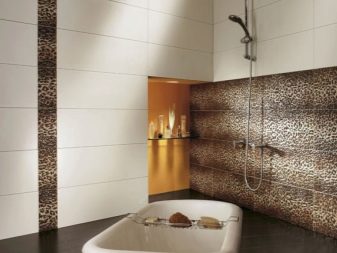
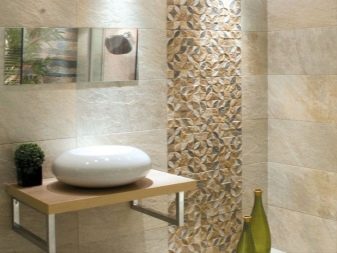
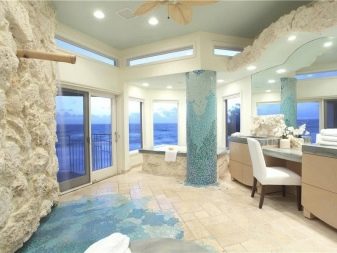
Textured coatings are still relevant, especially the combination of different in texture tiles. To make sure that the embossed pattern is not drowned in a bright, saturated color, for this style of design are chosen, as a rule, light-colored tiles: white or steel.

Another recent fashion trend is the unusual way of laying ceramics and the use of different sized material. Diagonal, modular style, "patchwork" - the absolute hits of the new season.
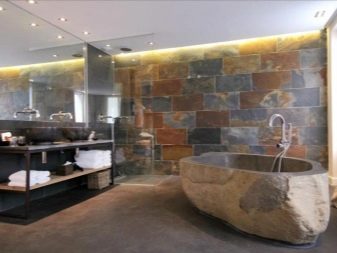
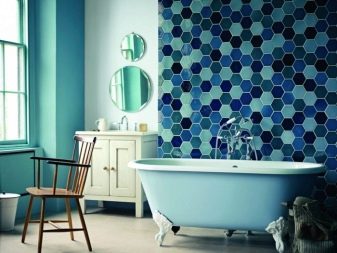
Selection tips
The choice of suitable tiles largely depends on the size and architecture of the room. For example, if the bathroom has a complex layout, there are arched or other structures, then you can consider a mosaic for tiling.
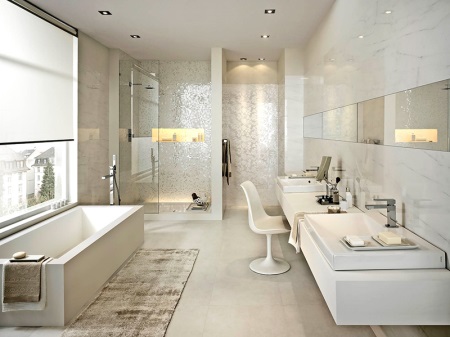
Before buying tiles, you should pay attention to the following points:
- If the tiles are glazed, the glaze should go over the end part of the tile. Otherwise, the unpainted part will be strongly conspicuous, it will be difficult to cover it with grout, the color of the clay will act on the general background.
- When buying several packages, it is desirable to choose material from the same batch. Otherwise, there is a risk that tiles from different batches will differ in color.
- The recommended safety margin is at least 5-7% of the estimated number of tiles. The reserve goes on trimmings, scrap, etc.
- If ceramics is purchased to tile the entire bathroom, it is best to buy material from one collection. Floor and wall coverings from one collection look most harmonious with each other.
- When buying the material, it is worth paying attention to the markings on the packaging. All tiles are divided into grades. Marking in red means first grade material, i.e. the highest quality. Blue marking - second grade, green - third.
- Be sure to check the moisture resistance of tiles. If the moisture applied to the inside of the tile will collect on its surface in droplets - the tile is suitable for damp rooms.

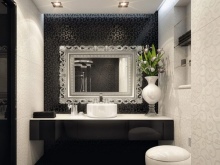
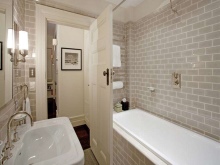
Examples of beautiful bathroom decoration
The original option in the style of "patchwork". The floor looks more like a motley beautiful quilt than a covering made of ceramics. To make the interior not seem too garish, the wall covering is made in white, and multicolored tiles are used to decorate a wide accent strip.
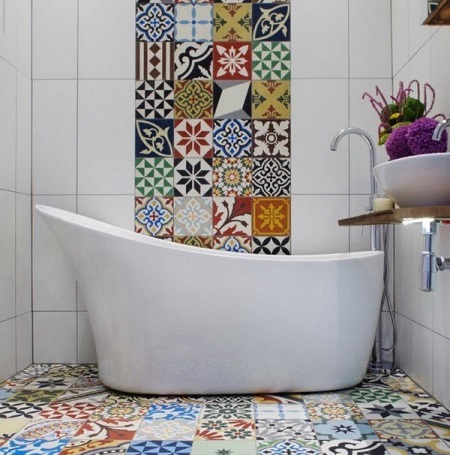
The classic interior is decorated in full accordance with fashion trends: a beautiful combination of several shades of lilac, floral ornamentation, and stylish decor.
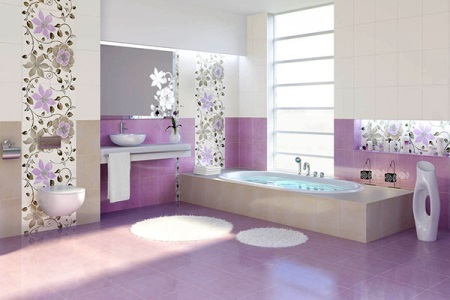
A snow-white bathroom is trendy and stylish! Sleek black decor on the floor, chrome fittings and bright bathroom accessories enliven the austere interior.
